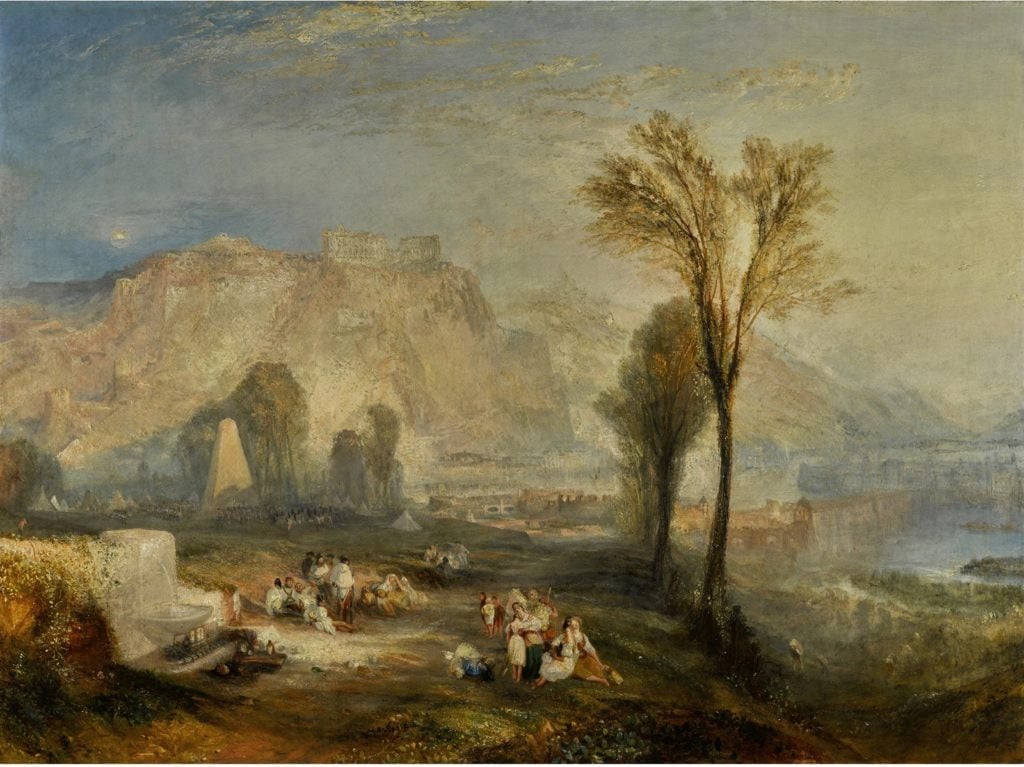Auctions
Sotheby’s Snags Turner Landscape, to Be Offered This Summer for Up to $31 Million
If it makes its high estimate, it will be among Turner's top-selling canvases.

If it makes its high estimate, it will be among Turner's top-selling canvases.

Brian Boucher

Sotheby’s London will test the heights of the market for British art this July with what could be one of the top-selling paintings by Joseph Mallord William Turner, currently the best-selling British-born artist on the market.
Measuring four feet wide, Ehrenbreitstein (1835) shows the ruins of the titular fortress, near the German city of Coblenz, and is estimated at £15–25 million ($18.7–31.2 million). If the canvas makes its high estimate, it will rank as the English painter’s fourth-priciest work at auction, according to the artnet Price Database.
Turner’s two highest prices have come in just the last seven years; the artist’s current auction high is $47.6 million, achieved at Sotheby’s London in December 2014 with Rome (from Mount Aventine), also of 1835; besides being the highest price for Turner, that’s the highest price for any British-born artist at auction. Modern Rome – Campo Vaccino (1839) fetched $45 million when it came under the hammer, also at Sotheby’s London, in July 2010. The current canvas has come to auction twice before; the last time was in 1965, when it achieved a then-record price of £88,000 ($245,500). The current seller is unnamed.
Ehrenbreitstein was painted as one of a number of works destined to be turned into engravings, whose distribution enabled the wide dissemination of the artist’s work, by the publisher John Pye. The artist generally painted watercolors for that purpose, and the oil painting, which presented greater technical challenges in the transformation into a print, took some 11 years to translate into that medium.
After that laborious procedure, the painting went back to Turner, who sold it to the collector Elhanan Bicknell, an avid buyer of his work, some of whose other canvases by the artist now reside in institutions including London’s Tate Britain and, in New York, the Frick Collection and the Metropolitan Museum of Art.
Inspired by a passage from an epic poem by Lord Byron, the painting was shown at London’s Royal Academy of Arts in the year it was created. It was in good company; the four other works shown alongside it have gone to major museums, including the National Gallery of Art in Washington, DC, and the Victoria & Albert Museum, in London.